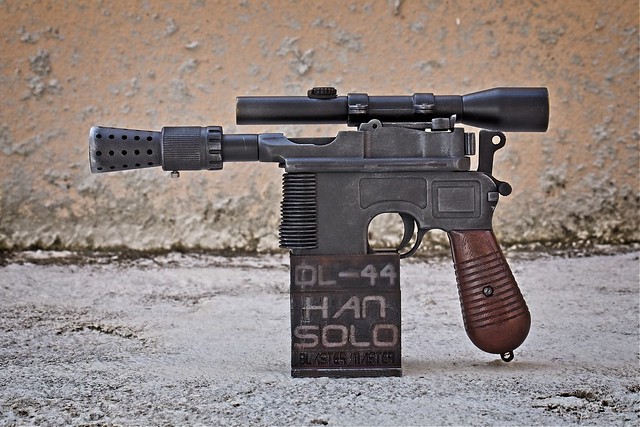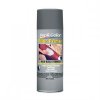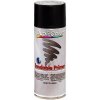DJ - You don't say what country you are in and the type and brands of primers vary greatly from place to place, so I can only give you recommendations based on what I've used in the United States.
To get a smooth surface on the White Strong and Flexible material you're going to need to use a "Filler Primer". That's a primer with a high solids content designed to fill surface texture. You will also have to do a bunch of sanding. With a little bit of careful work you should be able to get a perfectly smooth, texture free surface.
Tamiya Primer is good but is a low solids primer really intended for use on smooth plastic or metal surfaces. There are a lot of brands of spray can primer out there but my current favorite for this exact job is Rustoleum Grey Filler Primer which is pretty widely available at Home Centers. An important thing is that the primer be able to be sanded without gumming up, and not all are, even ones that say "Sandable" on their label. The Rustoleum primer sands beautifully, as long as you let it dry sufficiently. More on that in a bit.
You'll need to use Wet-n-Dry type sandpaper with plenty of water. The regular tan or light grey sandpapers are fine for wood but not for sanding primers and plastic. Before priming sand the entire surface with 220 grit paper and lots of water. The water helps to prevent the paper from clogging and gives a better result. You don't need to try to get the surface really smooth with this first pass, just sort of leveled out, get rid of build lines, etc. The white nylon material doesn't sand all that well anyway.
Rinse all residue off the surface and allow to dry thoroughly. It's best to set the part aside for several hours. White Strong and Flexible is actually microscopically porous and will absorb a tiny bit of water. This can ruin the primer finish. Once you're sure the part is dry apply a light coat of primer. Get an even grey coat but don't apply too thick. Let the primer dry for an hour or so, they apply a second coat. Now this is the important part... the instructions on the can stat the primer can be sanded after 4 hours... not true! It will still gum up the sandpaper at this point, even with water. You need to let the primer dry for 24 hours before it will sand nicely. Sorry, getting a good finish will require patience.
Once the primer is thoroughly dry wet sand it with fresh 220 grit sandpaper. The goal here is to knock down the high spots. You'll end up exposing white plastic but you should see little specs of grey paint filling in the texture. Dry completely as before, then repeat the two coats of primer followed by a 24 hour dry again. Continue this process, sanding with 220 grit and reprime until the surface is smooth an uniformly grey. This can take 3 or four cycles. Then go with a single coat or primer, followed by a gentle sanding with 320 grit paper, the objective here is to remove sanding scratches from the 220. Then dry, single coat of primer, dry and wet sand with 400 grit to remove the 320 scratches. At this point you should have a pretty smooth surface good for final paint, if you're using a flat finish paint. If you are using gloss paint, then continue the prime and sanding cycle going to 600 and possible 1000 grit sand paper. Darker gloss paints can benefit from the finest sanding.
Good luck and be patient!




